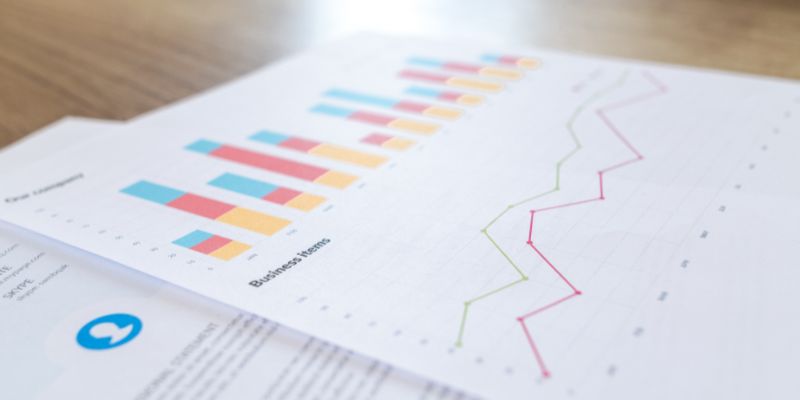Investing is one of the best options to generate wealth while working on your other income-generating sources. Still, the fundamental rule that applies while investing is taking a risk. Failure is the most important of all; you must be mentally prepared to bear the loss, learn from your failure, and move forward to other opportunities.
Most people stuck between these two traits lose hope and say goodbye to investing, but smart ones start with other promising opportunities, invest with what they can lose, and keep on testing their strategy and luck. Out of many investment options, stocks and mutual funds are the best.
But there are other investment options that, with time, return good profits; commodity trading is one of them; especially for new investors, it’s a good opportunity and option to start their journey. Commodities tend to reap big profits if followed by proven and tested strategies. To understand how it works, one should start with basic trading, test some strategies, gain confidence and then go big.

Understanding Commodities:
Commodities are defined as raw materials used in different ways to make different products; it includes all kinds of raw materials, including agricultural products, fossil fuels, and mineral ores. Financial market terms comprise physical products/goods anyone can buy or sell. It includes items related to:
- Energy: The sector or market includes all kinds of products, from oil, natural gas, ethanol, uranium, coal, etc. other than that, all forms of renewable, like solar or wind power, also come in this category.
- Metals: All kinds of metals, from precious to raw or industrial metals, fall in the metal commodity category. Precious metals like gold, platinum, silver, and palladium, and industrial metal include iron ore, tin, copper, zinc, and aluminum.
- Agricultural Products: Agricultural products include all organic or raw products that include edible and non-edible goods. All kinds of grains, sugar, cocoa, cotton, rubber, and palm oil come in this commodity category.
- Livestock: Animals like cattle and hogs, which, one way or another used to meet the human needs of food and other nutrients at a large scale, come in this category.
The prices of commodities depend on the demand, supply, and market forces, but if the right strategies are used, commodities are the best to add to your investment portfolio; they not only diversify it but also play an important role in generating wealth. Here are some proven strategies that one can use to invest in commodities trading.
Commodity Trading Strategies: Getting the Right Information:
Getting the right information from the right sources is the best way to start your commodity investment journey; financial news and reading relevant commodity newsletters greatly help. They provide the latest trading tips and information about the market situation and help develop your trading skills.
The commodity trading strategies depend on the technical analysis of different commodities by tracking their price movements, moving averages, and other technical metrics; all these properties are obtained using a technical charting platform.
These technical analyses and metrics provide the basis for all the trading strategies, alerting the trader on their entry or exit positions. Trading strategies are different in their methodology and approach to incorporate technical indicators to provide necessary guidance to the traders.
However, these strategies are also used to make the most thorough decision. It generates the best results by considering all the scopes and parameters, but it can become complex if the traders are not experienced enough; therefore, they focus on one or two main signals.
Range Trading:
Range trading is used in almost all types of financial market trading; this strategy includes a channel to provide graphs of support and resistance levels. By analyzing these graphs, traders can buy at the support level when the prices are at the bottom and sell at the resistance level when prices are at the top.
The bottom or top levels in commodities trading are highly influenced by demand and supply; a huge demand can max out the top values, reaching their peak values and creating the expectations for price fall, whereas, at bottom levels, excessive supply can create an oversupply event, where prices fall below the estimated values. Still, in this scenario, a rebound is most likely to happen.
In range trading, several indicators are used by traders to get information on overbought and oversold areas. Channel range charting, relative strength index, momentum, stochastic, and rate of change are some major indicators. Still, it’s difficult to determine a good entry or exit point if the market remains in overbought or oversold areas for a long.
Breakouts:
This strategy involves trading on short-term moves; one can buy the commodity just before it reaches its substantially higher end or sells a commodity when its price moves toward a substantially lower end. Breakouts are used best with specified support and resistance levels and help traders profit on the higher and lower end.
It works on the simple principle; markets are always changing trends, setting higher and lowers; by using the stats and information about how strong and long-lasting the trends are, traders can easily make profits; however, it fails if the market is unable to make strong, short term trends.
Fundamental Trading:
This strategy includes technical indicators and fundamentals; the fundamentals are based on distinctive market dynamics and other factors that can impact the market forces. Especially in agricultural commodities, climate factors can decrease crop production, creating demand and supply constraints in the market.
The fundamental strategy needs a lot of research and correct information sources; it also requires time. Besides that, patience and long-term planning with technical patterns and identifying or estimating the right amounts can help secure good profits.
Commodities ETFs, Mutual Funds, and ETNs:
Investing in exchange-traded funds, mutual funds, and exchange-traded nodes that offer and are based on commodities is also considered a good strategy to start your investment journey in the commodities; it only diversifies your portfolio but also is a much safer and less risky way.
You can take part with a small amount and become a part of a larger range of commodities; also, you have professional investors managing the funds, which may cost you some fees, but if you are looking for a safer option, this strategy works best for you.
Pool and Manage Futures:
Investing in Commodity pools and managed futures best suits traders looking for larger returns and are willing to take high risks; these are small private funds that are managed privately and are not publicly available; you need to get approval to buy into the fund.
They may involve more complex strategies than ETFs and Mutual funds, but if successfully implemented, these strategies have the potential for higher returns. Their drawback is higher fees, and they usually welcome a limited amount of people.
Final Thoughts:
Investing in commodities is good for diversifying your investment portfolio; they can return good profits if traded with the right strategies. Different strategies can be used to get your desired results; however, you must carefully monitor the market trends, conditions, and other external factors that can impact commodities. You can also invest in funds that deal in trading commodities if you are looking for a safer option.

What is Life Insurance?

How Does The Bid-Ask Spread Function In Trading?

Where's My Refund? Tracking the Status of Your Tax Return

How Do Private Party Auto Loans Work?

All You Need To Know About Unlock Home Equity Agreement

How to Calculate Interest on a Loan

What Is a Contribution to Retirement?

What Exactly Is a Swap?

Ways to Calculate a Company's Equity

UK's Savings Habits: Where Does the Average Stand?

Ways to Protect Retirement Money from Market Volatility

